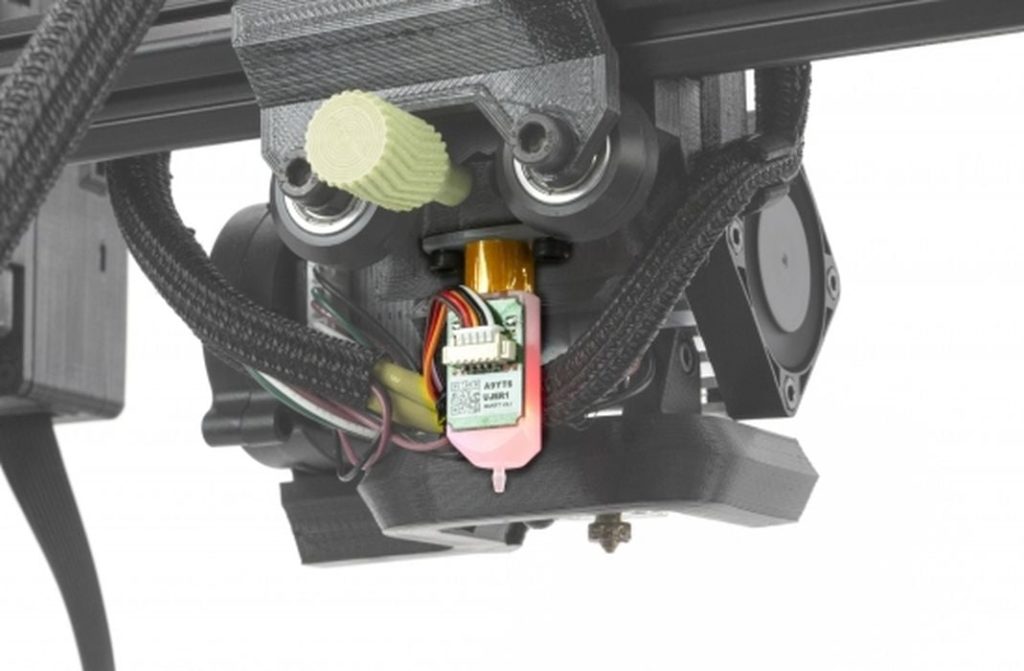
FAME 3D released a new desktop 3D printer, the LulzBot TAZ SideKick.
The SideKick is one of the first new devices produced under the LulzBot brand since the operation was purchased by FAME 3D from Aleph Objects in 2019, and it is quite an interesting machine.
I should say, “two machines”, because the TAZ SideKick is available in two sizes.
The TAZ SideKick 289 has a build volume of 162 x 162 x 181 mm, whereas the TAZ SideKick 747’s build volume is larger at 231 x 231 x 248 mm.

I pondered for a moment the naming of these two devices. The “289” is likely derived from the number of cubic inches of build volume on the TAZ SideKick 289. But the TAZ SideKick 747’s build volume in cubic inches is 808, not 747, if you use the millimeter specifications for the calculation. The imperial specifications yield 749.25 cubic inches, so this is a bit of a mathematical puzzle. Perhaps it’s simply named after the eponymous airliner, as the TAZ SideKick 747 is the biggest SideKick?
TAZ SideKick Features
Naming aside, the SideKick devices have some very interesting features. The most notable in my opinion would be the use of belts — on ALL axes.
Normally belt drives are used on the X and Y axes, while threaded rods typically power the Z-axis. That’s not the case for the SideKicks, which use a belt system for the Z-axis. FAME 3D explains:
“With high precision belt drive in all axes, the TAZ SideKick is able to print freely at a variety of layer height resolutions eliminating Z banding or Z wobble issues that can arise in lead screw equipped machines.”
That should indeed enable higher-quality 3D prints.
The SideKick machines both have fully automated mesh bed leveling systems, which use official BL Touch sensors.

Normally at this point in the story I’d explain the details of the machines’ tool heads. However, that’s a bit tricky with the SideKicks because they use an interchangeable tool head system that can use any of the nine current LulzBot tool heads with their Universal Mount System.
To swap these in and out is a simple matter involving some thumbscrews, a cable, and telling the machine which tool head was just installed.

The print surface for the TAZ Sidekicks has two options. You can select a borosilicate glass option that includes a PEI coating, or a spring steel magnetically-attached plate (the LulzBot OctoGrab) that releases prints when twisted.
The SideKicks have been designed for portability. They both can fold in their control panel, which is typically the issue when relocating other desktop 3D printers: the control box sticks out and can get caught during transport. Not so on the SideKicks.
The LulzBot line traces its heritage back to the original RepRap designs long ago, and still retains much of the philosophy: apparently over half of the parts on the SideKicks are 3D printed at the company’s North Dakota print farm.
This also means that replacement parts are straightforward to obtain: just print them yourself after downloading the 3D model from LulzBot’s GitHub page.
The machines both come with a one-year warranty and “full time customer support”. You can also obtain support from their rather large online community.
TAZ SideKick Pricing
As for pricing, that’s a bit difficult to explain. Yes, there’s two models, but there are a number of options that can push the pricing up or down, depending on what is selected. To handle this, FAME 3D has set up a LulzBot TAZ SideKick configurator page.
I tried the configurator and, of course, there were dozens of possibilities. However, to provide some perspective I was able to configure a high and low version of each machine in a reasonable configuration:
- LulzBot TAZ SideKick 289: US$1085-US$1265
- LulzBot TAZ SideKick 747: US$1285-US$1475
I should point out that the lower price option includes no control box, as you can control the device from an external set-top box or PC, for example using Octoprint. However, many people might want a control box installed.
Note that you can raise the pricing significantly as you add extra tool heads or extra years of extended warranty. It’s probably best that you use the configurator yourself to prepare a device that matches your specific needs.
The LulzBot brand has a good reputation for reliability and quality, and these two new devices should carry that forward.
Via LulzBot
